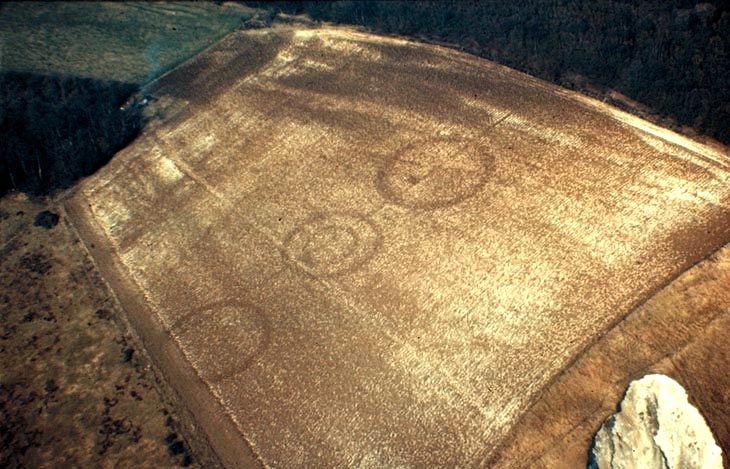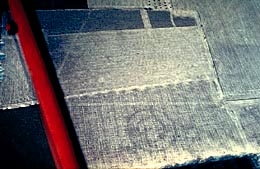- Home
- Clues on the ground
- The phenomenon of capillary action
Protohistoric circles stand out well on chalky soil. Neufmoulin (Somme).
Protohistoric circles that are much less visible on silty ground. Here the contrasting shades are reversed. Noyelles-sur-Mer (Somme).
On bare ground, fleeting damp-marks can reveal underground anomalies. The position of ditches and filled-in pits are revealed via a process comparable to that used by roofers to locate roof leaks. To find them, they spray copious amounts of water on the roof and then wait for the water to evaporate. Zinc roofs dry quickly, and damp marks remain only around the areas with leaks, because the water rises up from the wood beneath via capillary action, or capillarity The same is true for fields.
After heavy rain, the land is uniformly dark. If the weather improves markedly, the ground starts to dry.
In a few hours, it becomes uniformly light in tone. However, for a very brief intermediate period, dampness remains only in certain areas and forms dark spots and lines over pits and ancient ditches that, even though they are filled in, are able to retain water better. Chalky soil is extremely good for these phenomena. They very rarely occur on silty ground, and when they do, the indicators are reversed.
Les Avergnes des fées. It is noteworthy that peasants considered these circles of morning dew, which are very visible on this chalky slope, to be the work of fairies. Maisnières.
Two concentric circles form dark patches in the snow. Noyelles-sur-Mer (Somme).
April (and March) showers…
The best photographs, whether on the ground or from the air — and with the residual damp providing high contrast — have been taken in rainy spring weather, in high wind after a very heavy downpour. The same phenomena can also occur after the morning mist dissipates.
Morning dew, frost, and melting snow can also play a role in the appearance of these damp-marls, which can sometimes be observed in the field.




